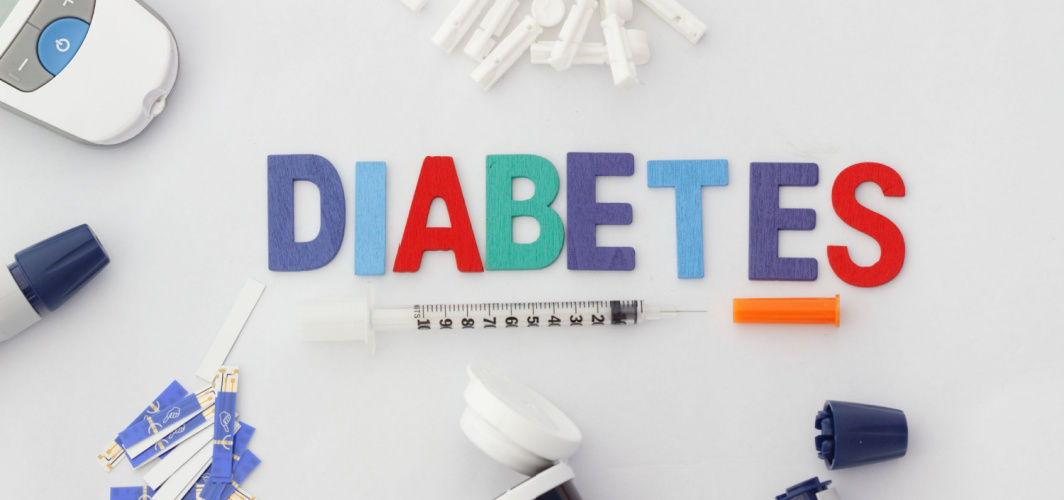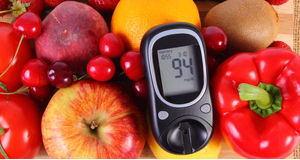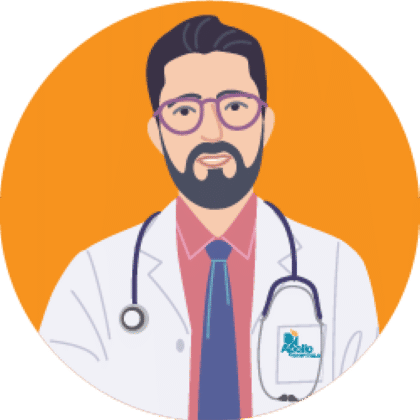Diabetes Management
How to Check Sugar Levels After a Meal?
2 min read
By How to Check Sugar Levels After a Meal? - 19 September 2023, Updated on - 22 February 2024
Share this article
0
0 like

Managing blood sugar levels is an important aspect of diabetes care, and monitoring your sugar levels after meals can provide valuable insights into how different foods and portions affect your body. Here's a comprehensive guide on how to check sugar levels after a meal to help you maintain better control of your diabetes.
1. Use a Glucometer
The primary tool for checking post-meal sugar levels is a glucometer, a small and portable device that measures blood glucose levels. Before you start, ensure that the pricking area is clean and the device is properly calibrated according to the manufacturer's instructions.
2. Timing Matters
To get an accurate reading, it's essential to check your sugar levels at the right time. Typically, it's recommended to test 1 to 2 hours after your meal. This timing allows you to see how your body processes the carbohydrates from your meal.
3. Hand Hygiene
Before testing, wash your hands thoroughly with soap and water. Residues from food or other substances on your fingers can contaminate the test strip, leading to inaccurate results.
4. Prepare the Lancet Device
Most glucometers use a lancet device to prick your fingertip for a blood sample. Follow the instructions provided with your device to prepare and use the lancet.
5. Obtain a Blood Sample
Place a test strip into the glucometer and use the lancet device to prick the side of your fingertip. Gently squeeze your fingertip to collect a small drop of blood and apply it to the test strip.
6. Wait for the Reading
The glucometer will analyse the blood sample and provide a numerical reading of your sugar level on its display screen.
7. Record Your Results
Make it a habit to keep a record of your post-meal sugar levels. This tracking helps you and your healthcare provider identify patterns and make necessary adjustments to your diabetes management plan.
8. Interpret the Results:
Understanding your post-meal sugar levels is crucial. In general, the normal post-meal blood sugar level for individuals with diabetes is under 180 mg/dL.
9. Take Action:
Based on your post-meal sugar levels, you and your healthcare provider can decide if any changes are needed in your diet, medication, or exercise routine.
10. Seek Guidance:
Always consult with a diabetologist for guidance on monitoring and interpreting your post-meal sugar levels. They can provide personalised advice and help you create a comprehensive diabetes management plan.
Conclusion
Checking sugar levels after a meal empowers individuals with diabetes to make informed decisions about their dietary choices and medication. It's a valuable tool for achieving better blood sugar control and ultimately improving overall health and well-being.
Diabetes Management
Consult Top Diabetologists
View AllLeave Comment
Recommended for you

Diabetes Management
Prevalence of Diabetes in India: These Are The 5 Worst-Affected States
A Lancet study reveals alarming diabetes prevalence in India, with 101 million affected individuals, constituting 11.4% of the population. States such as Goa (26.4%), Puducherry (26.3%), and Kerala (25.5%) top the list. Despite a lower prevalence in Uttar Pradesh (4.8%), the study warns of a potential surge. Regional disparities show higher rates in urban areas. Experts emphasize lifestyle changes, citing sedentary habits and poor nutrition as key contributors.
.jpg?tr=q-80)
Diabetes Management
Boosting Immunity with Food: A Guide for Diabetics
Boosting your immunity as a diabetic? Learn how certain foods can help! From green leafy vegetables to oily fish, discover the beneficial impact these foods can have on your immune system. But remember, diet is just one aspect. For a holistic approach to managing type 2 diabetes, check out the Apollo Super 6 program. It's designed to help you manage your condition through lifestyle changes and gives you access to expert consultations, webinars, and much more.
.jpg?tr=q-80)
Diabetes Management
What Is The Impact Of Climate Change On Diabetes Care?
Climate change poses unique challenges to individuals managing diabetes, from increased health risks under extreme weather conditions to disruptions in medical supplies access. Simultaneously, diabetes care also contributes to environmental issues. Tackling these challenges requires robust strategies and coordinated efforts. Enrolling in comprehensive support programmes like Apollo Super 6 can be a strong step towards managing diabetes effectively amidst these challenges.
Subscribe
Sign up for our free Health Library Daily Newsletter
Get doctor-approved health tips, news, and more.
Visual Stories

8 Fruits That are Incredibly Healthy for Diabetes
Tap to continue exploring
Recommended for you

Diabetes Management
Prevalence of Diabetes in India: These Are The 5 Worst-Affected States
A Lancet study reveals alarming diabetes prevalence in India, with 101 million affected individuals, constituting 11.4% of the population. States such as Goa (26.4%), Puducherry (26.3%), and Kerala (25.5%) top the list. Despite a lower prevalence in Uttar Pradesh (4.8%), the study warns of a potential surge. Regional disparities show higher rates in urban areas. Experts emphasize lifestyle changes, citing sedentary habits and poor nutrition as key contributors.
.jpg?tr=q-80)
Diabetes Management
Boosting Immunity with Food: A Guide for Diabetics
Boosting your immunity as a diabetic? Learn how certain foods can help! From green leafy vegetables to oily fish, discover the beneficial impact these foods can have on your immune system. But remember, diet is just one aspect. For a holistic approach to managing type 2 diabetes, check out the Apollo Super 6 program. It's designed to help you manage your condition through lifestyle changes and gives you access to expert consultations, webinars, and much more.
.jpg?tr=q-80)
Diabetes Management
What Is The Impact Of Climate Change On Diabetes Care?
Climate change poses unique challenges to individuals managing diabetes, from increased health risks under extreme weather conditions to disruptions in medical supplies access. Simultaneously, diabetes care also contributes to environmental issues. Tackling these challenges requires robust strategies and coordinated efforts. Enrolling in comprehensive support programmes like Apollo Super 6 can be a strong step towards managing diabetes effectively amidst these challenges.

